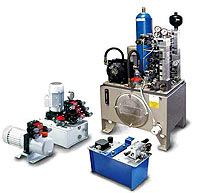There are a number of machines that perform numerous tasks that greatly surpass their physical appearance. For instance, the “Car Jack”, this is a small device more or less the size of a 300Ml soda bottle, though it is so small, it is capable of lifting and sustaining a weight of nearly a Ton (1000 times its own weight). Likewise, there are other devices like “fork lifts”, “cranes” etc, these all effortlessly perform lots of “magic”.


There are a number of machines that perform numerous tasks that greatly surpass their physical appearance.
For instance, the "Car Jack”, this is a small device more or less the size of a 300Ml soda bottle, though it is so small, it is capable of lifting and sustaining a weight of nearly a Ton (1000 times its own weight). Likewise, there are other devices like "fork lifts”, "cranes” etc, these all effortlessly perform lots of "magic”.
The huge machines you see on construction sites, hydraulic equipment is amazing in its strength and agility! On any construction site you see hydraulically operated machinery in the form of bulldozers, backhoes, shovels, loaders, forklifts and cranes.
Hydraulics operates the control surfaces on any large airplane. You see hydraulics at car service centres lifting the cars so that mechanics can work underneath them, and many elevators are hydraulically-operated using the same technique. Even the brakes in your car use hydraulics!
The Basic Idea behind any hydraulic system is very simple: Force that is applied at one point is transmitted to another point using an incompressible fluid. The fluid is almost always an oil of some sort.
The force is almost always multiplied in the process. The system has a cylinder and piston; it is this chamber that creates the necessary pressure onto the system. There should be a main cylinder (master cylinder), there can be any number of slave cylinders at any distance.
The great thing about hydraulic systems is that the pipe connecting the two cylinders can be any length and shape, allowing it to snake through all sorts of things separating the two pistons.
The pipe can also fork, so that one master cylinder can drive more than one slave cylinder if desired. The neat thing about hydraulic systems is that it is very easy to add force multiplication (or division) to the system.
In a hydraulic system, all you do is change the size of one piston and cylinder relative to the other.
As said above, there must be two cylinders, the one to which the pressure is applied and the one that acts or vice versa. That is how you can apply a 1Kg force and it results into 1000Kg force.
Take the brake system in your car; this is an example of a basic piston-driven hydraulic system. When you depress the brake pedal in your car, you could apply less than a Kg to the pedal but it pushes on the piston in the brake’s master cylinder such that, the force applied to the brakes is more than 100 times your foot force.
Four slave pistons, one at each wheel, actuate to press the brake pads against the brake rotor to stop the car. (Actually, in almost all cars on the road today two master cylinders are driving two slave cylinders each.
That way if one of the master cylinders has a problem or springs a leak, you can still stop the car.)
In most other hydraulic systems, hydraulic cylinders and pistons are connected through valves to a pump supplying high-pressure oil. In modern cars, the vehicles have a hydraulic pump to actuate the pressure; this leaves the driver to apply very little force.
This concept is known as "power brakes”; ever tried to let your car roll down the slope while the engine is off?
When you apply the brakes, they are literary "dead”, that is because they depend on the "hydraulic pump” in your car. The same applies for the steering wheel.


